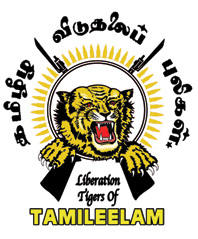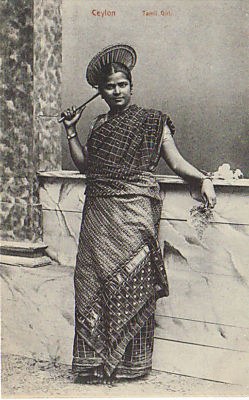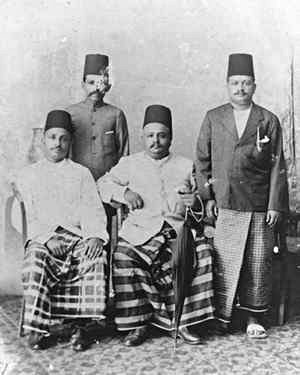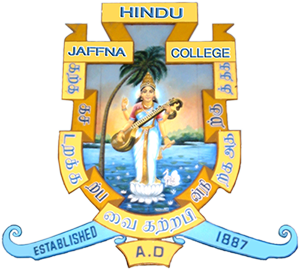Related Research Articles

The Liberation Tigers of Tamil Eelam was a Tamil militant organization, that was based in the northern and eastern Sri Lanka. The LTTE fought to create an independent Tamil state called Tamil Eelam in the northeast of the island in response to violent persecution and discriminatory policies against Sri Lankan Tamils by the Sinhalese-dominated Sri Lankan Government.

The Tamils, also known as the Tamilar, are a Dravidian ethnolinguistic group who natively speak the Tamil language and trace their ancestry mainly to the southern part of the Indian subcontinent. The Tamil language is one of the longest-surviving classical languages, with over two thousand years of written history, dating back to the Sangam period. Tamils constitute about 5.7% of the Indian population and form the majority in the South Indian state of Tamil Nadu and the union territory of Puducherry. They also form significant proportion of the population in Sri Lanka (15.3%), Malaysia (7%) and Singapore (5%). Tamils have migrated world-wide since the 19th century CE and a significant population exists in South Africa, Mauritius, Fiji, as well as other regions such as the Southeast Asia, Middle East, Caribbean and parts of the Western World.

Sri Lankan Tamils, also known as Ceylon Tamils or Eelam Tamils, are Tamils native to the South Asian island state of Sri Lanka. Today, they constitute a majority in the Northern Province, form the plurality in the Eastern Province and are in the minority throughout the rest of the country. 70% of Sri Lankan Tamils in Sri Lanka live in the Northern and Eastern provinces.
Loan words in Sri Lankan Tamil came about mostly due contact between colonial powers and the native population. Linguists study a language's lexicon for a number of reasons. Languages such as Tamil with centuries of literature and multi-cultural contact offer the chance to compare the various processes of lexical change. The words of foreign origin or loanwords illustrate those processes: calques, loanwords, the distinction between function words and content words.

Sri Lankan Moors are an ethnic minority group in Sri Lanka, comprising 9.3% of the country's total population. Most of them are native speakers of the Tamil language. The majority of Moors who are not native to the North and East also speak Sinhalese as a second language. They are predominantly followers of Islam. The Sri Lankan Muslim community is mostly divided between Sri Lankan Moors, Indian Moors, Sri Lankan Malays and Sri Lankan Bohras. These groups are differentiated by lineage, language, history, culture and traditions.

The burning of the Jaffna Public Library took place on the night of June 1, 1981, when an organized mob of Sinhalese individuals went on a rampage, burning the library. It was one of the most violent examples of ethnic biblioclasm of the 20th century. At the time of its destruction, the library was one of the biggest in Asia, containing over 97,000 books and manuscripts.

Jaffna Hindu College is a national school in Jaffna, Sri Lanka. It was founded in 1887 by a group of Hindu people who wanted an English language alternative to the Christian missionary schools.
Sri Lankan Tamil literature or Ceylon Tamil literature refers to Tamil literature produced in the current day country of Sri Lanka by various Tamil speaking communities such as the Sri Lankan Tamils, Indian Tamils of Sri Lanka and Sri Lankan Muslims. The earliest extant records survived from the Sangam age academies and continued in the medieval era in the courts of the Jaffna kingdom until modern times. The destruction of the Saraswathy Mahal library of Nallur and the burning of Jaffna library led to the loss of a large tract of Sri Lankan Tamil literature, although much survives through oral traditions and the unearthing and preservation of palm-leaf manuscripts, copper plate inscriptions & stone inscriptions.
Eelam War I is the name given to the initial phase of the armed conflict between the government of Sri Lanka and the LTTE.

Sinnathamby Sivamaharajah was a Sri Lankan Tamil newspaper publisher, politician and Member of Parliament.

The American Ceylon Mission (ACM) to Jaffna, Sri Lanka started with the arrival in 1813 of missionaries sponsored by the American Board of Commissioners for Foreign Missions (ABCFM). Although they had originally planned to work in Galle, the British colonial office in Ceylon restricted the Americans to out-of-the-way Jaffna due to the security concerns of the British who were warring with France at the time. The critical period of the impact of the missionaries was from the 1820s to early 20th century. During this time, they engaged in original translations from English to Tamil, printing, and publishing, establishing primary, secondary and tertiary educational institutions and providing health care for residents of the Jaffna Peninsula. These activities resulted in many social changes amongst Sri Lankan Tamils that survive even today. They also led to the attainment of a lopsided literacy level among residents in the relatively small peninsula that is cited by scholars as one of the primary factors contributing to the recently ended civil war. Many notable educational and health institutions within the Jaffna Peninsula owe their origins to the missionary activists from America. Missionaries also courted controversy by publishing negative information about local religious practices and rituals.

The Vanni chieftaincies or Vanni tribes was a region between Anuradhapura and Jaffna, but also extending to along the eastern coast to Panama and Yala, during the Transitional and Kandyan periods of Sri Lanka. The heavily forested land was a collection of chieftaincies of principalities that were a collective buffer zone between the Jaffna Kingdom, in the north of Sri Lanka, and the Sinhalese kingdoms in the south. Traditionally the forest regions were ruled by Vedda rulers. Later on, the emergence of these chieftaincies was a direct result of the breakdown of central authority and the collapse of the Kingdom of Polonnaruwa in the 13th century, as well as the establishment of the Jaffna Kingdom in the Jaffna Peninsula. Control of this area was taken over by dispossessed Sinhalese nobles and chiefs of the South Indian military of Māgha of Kalinga (1215–1236), whose 1215 invasion of Polonnaruwa led to the kingdom's downfall. Sinhalese chieftaincies would lay on the northern border of the Sinhalese kingdom while the Tamil chieftaincies would border the Jaffna Kingdom and the remoter areas of the eastern coast, north western coast outside of the control of either kingdom.

Jaffna is the capital city of the Northern Province of Sri Lanka. It is the administrative headquarters of the Jaffna District located on a peninsula of the same name. With a population of 88,138 in 2012, Jaffna is Sri Lanka's 12th most populous city. Jaffna is approximately ten kilometres from Kandarodai which served as an emporium in the Jaffna peninsula from classical antiquity. Jaffna's suburb Nallur served as the capital of the four-century-long medieval Tamil Jaffna Kingdom.

Valvettithurai, sometimes shortened as VVT or Valvai, is a coastal town of Jaffna District on the northeast coast of the Jaffna Peninsula in Northern Province, Sri Lanka governed by an Urban Council of the same name. Valvettithurai was historically known for its seafaring traditions and olden transnational shipping trade.

Arumugam Thiagarajah was a Sri Lankan Tamil teacher, politician and Member of Parliament.

1984 Point Pedro massacre refers to the massacre of ethnic Sri Lankan Tamil civilians by the Sri Lankan Police in Point Pedro, a town in Northern Province, Sri Lanka. Police violence resulted in the deaths of at least 18 Tamils and also a high damage to the local property. The Hartley College library was burned down along with its laboratory reminiscent of the Burning of Jaffna library.
Eelamurasu was a Tamil language newspaper, which was published between 1984 and 1987. It was known for promoting a Tamil nationalist prospective and a pro-LTTE stance.
Namathu Eelanadu is a Tamil language newspaper. It was founded in 2002. It was known for promoting a Tamil nationalist prospective. The paper's office in Jaffna was raided by the Sri Lanka Army on 15 December 2005 and its staff interrogated.Sinnathamby Sivamaharajah was the managing director of the newspaper. He was shot dead on 20 August 2006 at his temporary home in Tellippalai, which was located 300 meters inside the Valikamam North High security zone. S. Raveendran who was working as a printing machine operator in the newspaper was killed on 12 February 2007 in his house.
References
- ↑ "'Jaffna burns again' - snippets from the burning of Jaffna Library". Tamil Guardian. 1 June 2020. Retrieved 29 June 2021.
- ↑ Anoma Pieris (25 October 2018). Sovereignty, Space and Civil War in Sri Lanka: Porous Nation. Taylor & Francis. pp. 100–. ISBN 978-1-351-24632-3 . Retrieved 29 June 2021.
- ↑ S. Sivanayagam (1987). Sri Lanka, 10 Years of Jayewardene Rule. Tamil Information & Research Unit. p. 18. Retrieved 29 June 2021.
- ↑ Harry Drost (1991). The World's News Media: A Comprehensive Reference Guide. Longman Group UK. pp. 476–477. ISBN 978-0-582-08554-1 . Retrieved 29 June 2021.
- ↑ Article 19 (Organization) (1991). Information Freedom and Censorship: World Report 1991. American Library Association. p. 226. ISBN 978-0-8389-2156-2 . Retrieved 29 June 2021.
{{cite book}}: CS1 maint: numeric names: authors list (link) - ↑ KADIRGAMAR, SANTASILAN (2011). "Jaffna in 1981: Days of Terror". Economic and Political Weekly . 46 (23): 27–30.